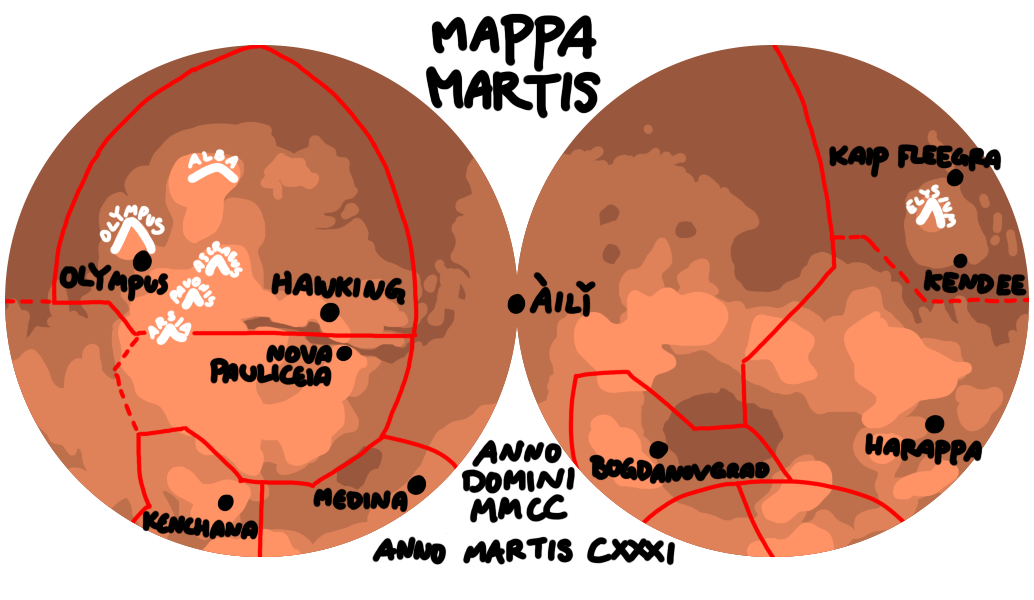As of 2215🜨 / 139♂, humans have been living on Mars for several generations, and before terraforming technology could even be remotely developed, most of the planet had already declared its independence from its Earthling overlords.
Emphasis on "most". The Olympus Mons Colony stills remains under EU control to this day, and after a series of diplomatic incidents between Brussels and the Presidential Habitat in Kendee, tensions are only rising.

Click on a territory to get some info on it.
Colonists use the Gregorian calendar and Martian calendar concurrently. On top of that, areas like the Noahic State or Cimmeria also recognise a variety of religious calendars.
The Martian calendar is an adaptation of Bruce Mills' Martian Business Calendar. Years on Mars have a whole number of weeks, either 95 or 96, and are divided into 24 months named after letters of the Greek alphabet consisting of 4 weeks each, with the exception of Omega which has 3 weeks in short years. Additionally, a Martian day (sometimes called a "sol" in English) is divided into 1000 tics, which are used instead of hours and minutes to refer to times of day. A Martian time of day is written as an @ followed by a three digit number of tics, with optional subdivisions given if necessary.
01 Alpha 001 @000.00 Airy-0 coincides with 10 April 1955 18:42:13 UTC.
Click here to access the Martian calendar converter.
The solstices and equinoxes do not occur on fixed dates, but vary within a 7 day interval from year to year:
Their status as holidays may be acknowledged everywhere on Mars, however observance of them differs greatly from territory to territory: while they are treated as mere uneventful workfree days in Olympus Mons with religious and Earth holidays being strongly prioritised, they play a major role in Elysian public life together with Free Elysium Day (02 Chi) and Viking Day (18 Theta) ever since the "Martianisation" campaigns of the early 2nd♂ century. Attempts to further "Martianise" these astronomical holidays by giving them quirky and localised names (e.g. "Tew's Yule" for the Winter Solstice) were mostly unsuccessful even during the height of the campaigns.